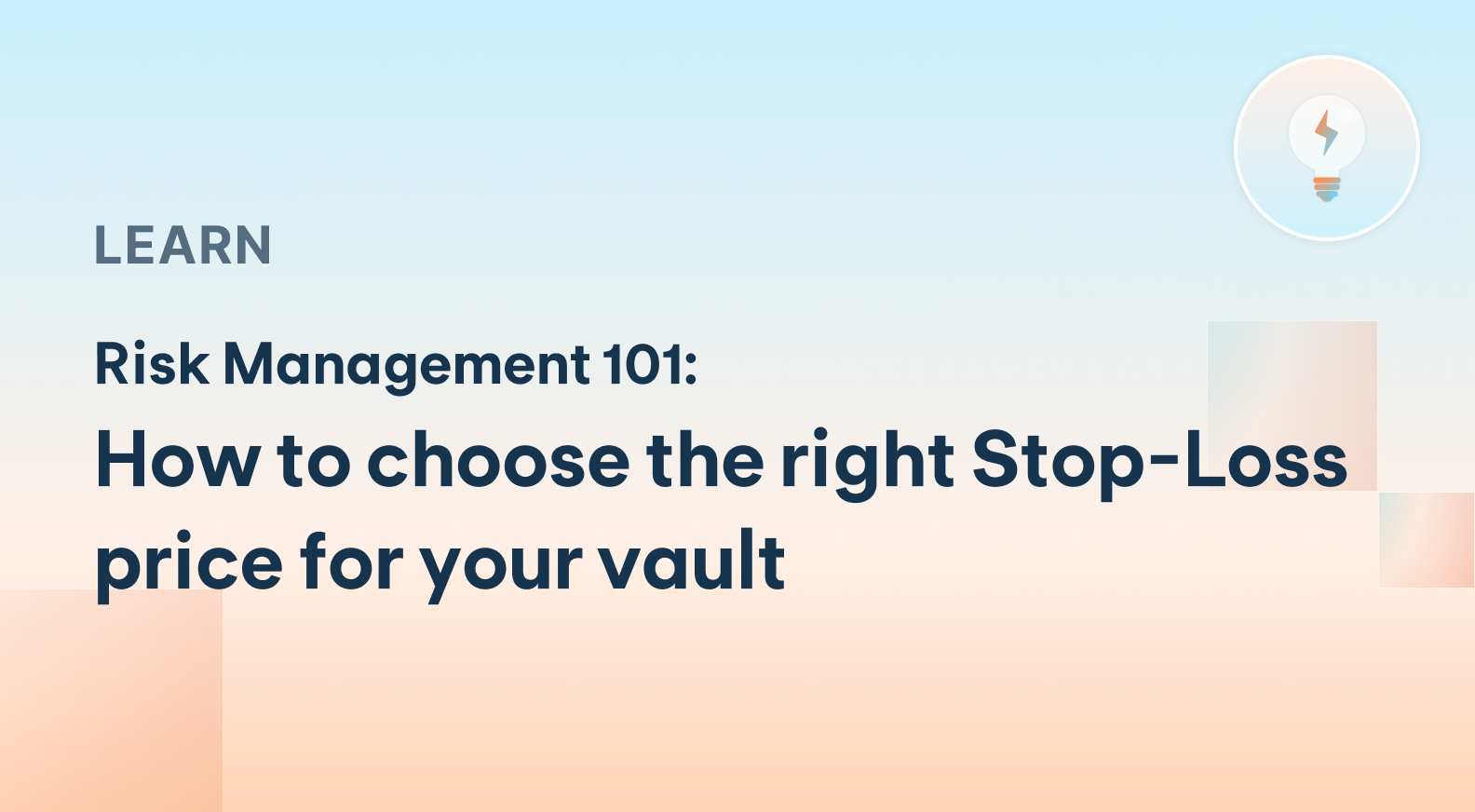Risk Management 101: How to choose the right Stop-Loss price for your vault

As investors, we constantly face the challenge of managing risk while maximizing returns, so Oasis developed Stop-Loss automation. The stop-loss trigger is one essential tool to achieve this delicate balance, fully automated for your vault in Oasis.app.
Why should you activate the Stop-Loss feature?
Setting up a stop loss is important because it helps protect your investments from significant losses in the event of market downturns or adverse price movements. The main benefits of using a stop loss include:
- Limiting losses: Stop loss orders prevent you from holding onto a losing position for too long, effectively minimizing the damage to your portfolio when the market moves against your expectations.
- Risk management: By defining the maximum loss you're willing to accept before entering a trade, you can better manage your risk and prevent emotional decision-making.
- Peace of mind: A stop-loss order allows you to step away from the market without constantly monitoring your positions, knowing that your investments are somewhat protected.
When should you activate the Stop-Loss feature?
The right time to set up a stop loss depends on your trading or investment strategy, risk tolerance, and the specific asset you're trading. Generally, you should consider setting up a stop loss when:
- Entering a new position: Set a stop loss as you open a trade to establish a predetermined exit point should the market move against you.
- Adjusting an existing position: If market conditions change or your analysis of the asset's performance has evolved, adjust your stop loss accordingly to protect your profits or further limit potential losses.
Protecting profits: If your position has generated profits, you may want to move your stop loss to a higher level (also called a "trailing stop loss") to lock in gains and prevent a sudden market reversal from erasing your profits.
How can you embrace volatility and use it to your advantage?
Choosing the right stop-loss price for your vault can make a big difference. There are several aspects to consider and some questions you should ask yourself when choosing Stop-Loss.
Rather than fearing volatility, you can embrace it and adjust your strategy accordingly. This involves identifying the asset's historical volatility and determining a stop-loss price that accounts for potential fluctuations.
By acknowledging that volatility is a natural market part, you can adjust your approach to account for it. Using tools like historical media moving averages, you can set stop-loss prices that reflect potential fluctuations in price, allowing you to stay within your risk tolerance while still taking advantage of potential market opportunities. So, instead of fearing volatility, embrace it as an opportunity to make informed decisions and optimize your strategy. Taking a proactive approach to volatility can increase your chances of long-term success in the market.
How can support and resistance levels be used to guide trading decisions?
Identifying support and resistance levels can be a powerful tool in trading. For instance, if you notice a strong support level for ETH at the zone of $1100, where the price has rebounded multiple times in the past, you can use this as a guideline for your stop-loss. Placing it just below the support level can minimize risk if the price falls.
By taking cues from past support and resistance levels, traders can make informed decisions about where to set their stop-loss prices, ultimately minimizing risk and increasing their chances of long-term profitability. Remember, support and resistance levels are not always foolproof, but by incorporating them into your overall trading strategy, you can gain a valuable edge in the market. So, the next time you're trading, consider taking cues from past support and resistance levels to help guide your decision-making process.
How can the risk-reward ratio guide you in setting an appropriate stop-loss price?
To maintain a favorable risk-reward ratio of at least 1:3, you should not risk more than 5% if the potential reward is 15%.
Using this calculation, you can make informed decisions about a trade's potential profit and loss, ensuring that your stop-loss price aligns with your overall risk management strategy. The risk-reward ratio is a crucial concept in trading, as it helps you balance potential gains and losses, ultimately increasing your chances of long-term profitability. Remember, trading always involves a degree of risk, but by maintaining a favorable risk-reward ratio, you can take a calculated risk and optimize your chances of success.
In conclusion, choosing the right stop-loss price is essential for your vault, as it helps manage risk while maximizing potential returns. By considering factors such as volatility, timeframe, support and resistance levels, and risk-reward ratios, you can make informed decisions about where to place your stop-loss orders. You can set up automated Stop-Loss triggers for your vault with Oasis.
Getting help
If you have any questions regarding Summer.fi in general, you contact us at support@summer.fi or on our social media.

